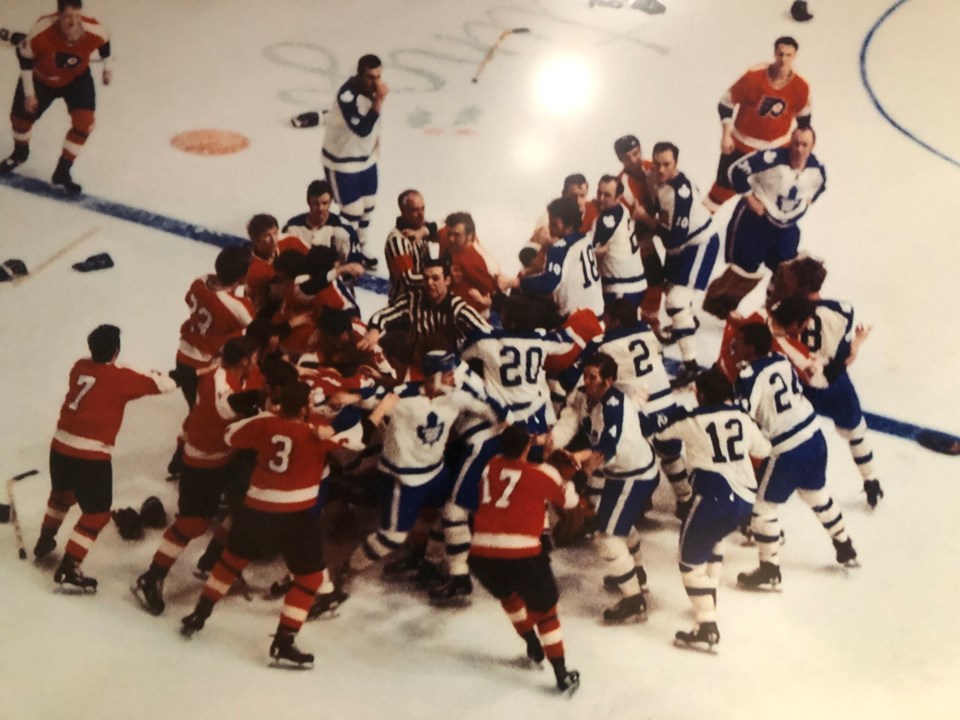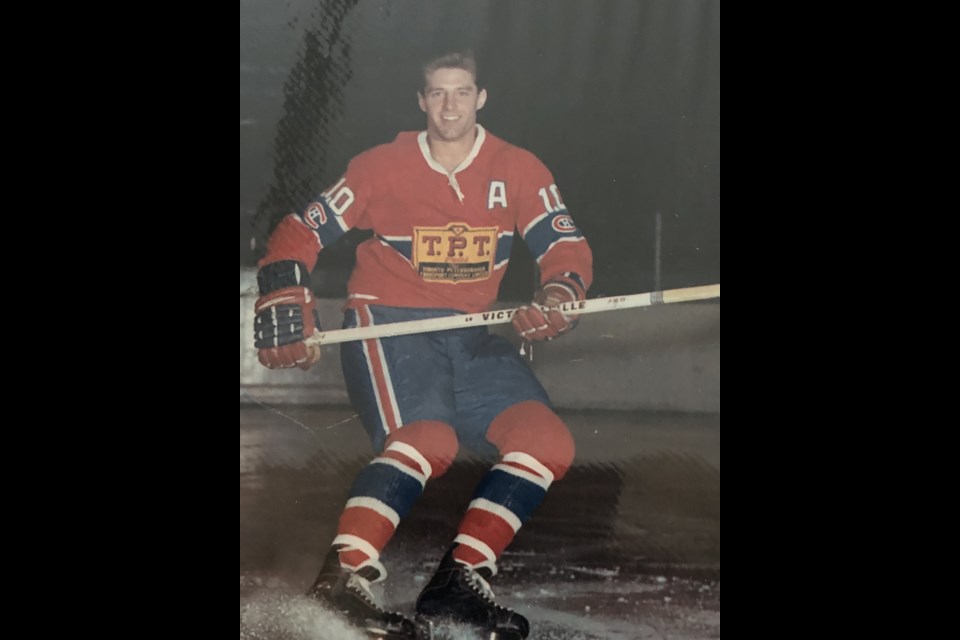Garry Monahan still seems a bit surprised, but is good-natured about the interest that he attracts from being the first player to be drafted into the NHL.
Sixty years ago, the Barrie-born, Toronto-raised teenager was at home when his family got a call from legendary Montreal Canadiens executive Sam Pollock.
Monahan was informed, through his father, Patrick, that he was the first-overall selection in the very first NHL Amateur Draft.
“My family and I didn’t even know what that meant, or what the draft even was," explained Monahan.
Back then, most players were bound to one of the six NHL teams from their early teens. From there, the better kids were placed on junior teams owned by the corresponding club to start the long journey to the NHL.
Most never even made it to junior hockey, fewer still to the NHL. But for kids that had slipped through the cracks, a draft was instituted in 1963, with an eye to make it universal and allow all NHL teams an equal shot at the best teenage players. That process took almost another decade to fully implement as the Original Six clubs began to divest themselves of the junior clubs they had owned.
The Monahan family didn’t know about it, but the draft that year was held in secret at the Queen Elizabeth Hotel in Montreal. The venue was the draft’s home for many years until the NHL started moving it around in the 1990s as it grew in stature.
The NHL Draft has now become a signature event and this year it is taking place starting Wednesday in Nashville. Regina Pats forward Connor Bedard, whose star has been ascending the hockey world for much of the past three years such that he is already a household name, will be taken first overall.

Though things were very different in 1963, Monahan has detected a shift from his draft anonymity six decades ago.
“For the first 40 years, there really wasn’t much, but there seems to be more interest lately, in the past 15 years or so,” said Monahan, who turns 77 in October. “I’m now getting a lot of mileage out of it, more notoriety.”
Like all players his age, the odds of making the NHL were infinitesimal for Monahan. Any player born before 1950 either had to be one of a relatively few to crack the NHL out of junior, or show the type of staying power required to play in the hardscrabble minor leagues of the day. It was a hard road, but playing opportunities greatly increased for players born from 1950 onward because of expansion, and then the formation of the World Hockey Association (WHA).
Monahan and the other 20 players taken in 1963, all born in the mid-1940s, had to find a way to survive, first on the fringes of the organization that selected them, before expansion changed the equation.
Monahan was one of just five players selected in 1963 to make it. Pete Mahovlich, taken second overall, is the most notable name; three others – Walt McKechnie, Jim McKenny and Gerry Meehan – also thrashed out long NHL careers.
To give some perspective of those that faded into obscurity: a player named Orest Romashyna was taken at No. 3 by the Boston Bruins. He spent a year playing junior for Hap Emms, who had recently moved the Flyers to Niagara Falls from Barrie. He later played at the University of Waterloo, but never came close an NHL roster.
There was some tough sledding, but Monahan found a way. Montreal sent him to play in Peterborough, where he blossomed as a junior and managed to remain part of the Canadiens organization for six years, though he only suited up for 14 games without registering a point.
“Sam Pollock later traded me to Detroit for Pete Mahovlich, who I had played with at St. Mike’s in Toronto,” said Monahan, poking fun at himself that the legendary Habs GM corrected his mistake by not taking Mahovlich over him in the first place.
Monahan kept up his schooling and took a year of courses at Trent University while still in Peterborough. He later earned a full degree after his career, that eventually included 748 games with five clubs, most notably the Leafs and Vancouver Canucks.
At around the same time his younger brother was establishing himself in the NHL, Monahan’s older brother, Pat, came to Barrie and suited up for the senior Flyers for four seasons, including that team’s 1974 Allan Cup triumph. Garry’s four seasons with the Leafs mirrored almost exactly Pat’s four seasons with the Flyers.
“Darryl Sly told (Pat) that he was going to be his 10th forward,” Monahan explained of the player-coach and former NHLer who was in charge of the Flyers. “He wanted Pat to kill penalties … that sort of thing and told (my brother) he could be his most important player because he was only going to put him out there in really (key) situations.”
For much of their lives growing up, which had begun in Barrie, Pat Monahan was the better player because he was almost three years older and he helped pave the way for his younger sibling – a phenomenon that still happens.
In fact, when the boys’ father answered the phone that day in 1963, he thought Pollock was mistaken and was referring to his oldest son being selected and not his youngest.
As Garry Monahan tells the story all these years later, Sly, who died in 2007, sensed an opportunity to leverage an unspoken sibling rivalry.
“He told Pat, ‘I think I have the best Monahan brother here in Barrie,'" with a hint of snark that only brothers would know.
“… Darryl Sly was a good motivator.”
After his playing career, which included time in Japan after the NHL, Monahan worked as a stockbroker for RBC Dominion Securities and then really found his sweet spot by early 1990s in real estate. He was also a frequent voice on Canucks broadcasts.
A father of three with five grandchildren, it has been a charmed life that has also included some heartbreak when he lost his wife, Barbara, to cancer about 25 years ago. Barbara was just 50 at the time of her death.
Still fit and active and with a long-term partner, Rica, he’s a regular presence at Canucks alumni events and shows up at Scotiabank Arena when he’s back in Toronto.
“I see myself as an equal alumni of both of them,” Monahan said of the Leafs and Canucks, while acknowledging he’s more connected to the daily goings-on in Vancouver.
With Rica by his side, he’s travelled the world near and far from Bhutan to Maui, which is a regular vacation haunt. He no longer plays hockey, but straps on the skis down Whistler Mountain every winter.
“It’s nothing too big, and with my bow legs from all the hockey, I look more like a Zamboni anyway,” he quipped.
As for any advice Monahan would give youngsters who will hear their name called this week in Nashville, Monahan was hesitant to dispense any, simply because the hockey world and the draft itself has changed so much since he first entered it with that fateful phone call 60 years ago.
But Monahan did offer an interesting perspective that shows how the ties that bind hockey players stretch back over eras and last forever.
“I was in Montreal (when) Jean Beliveau and Henri Richard were there,” he said, “then I went to Detroit, who had Gordie Howe, Alex Delvecchio and Frank Mahovlich, then I end up in Toronto and I’m playing on a line with Davey Keon.”
Later on in the conversation, Monahan offers even more perspective on how fortunate he has been.
“To look now today and see all the money that players now make compared (to my day), but when I was playing it still felt like I was doing very well. My wife a teacher at the time, (earning) about $5,000 a year.
“We still had it pretty good.”



